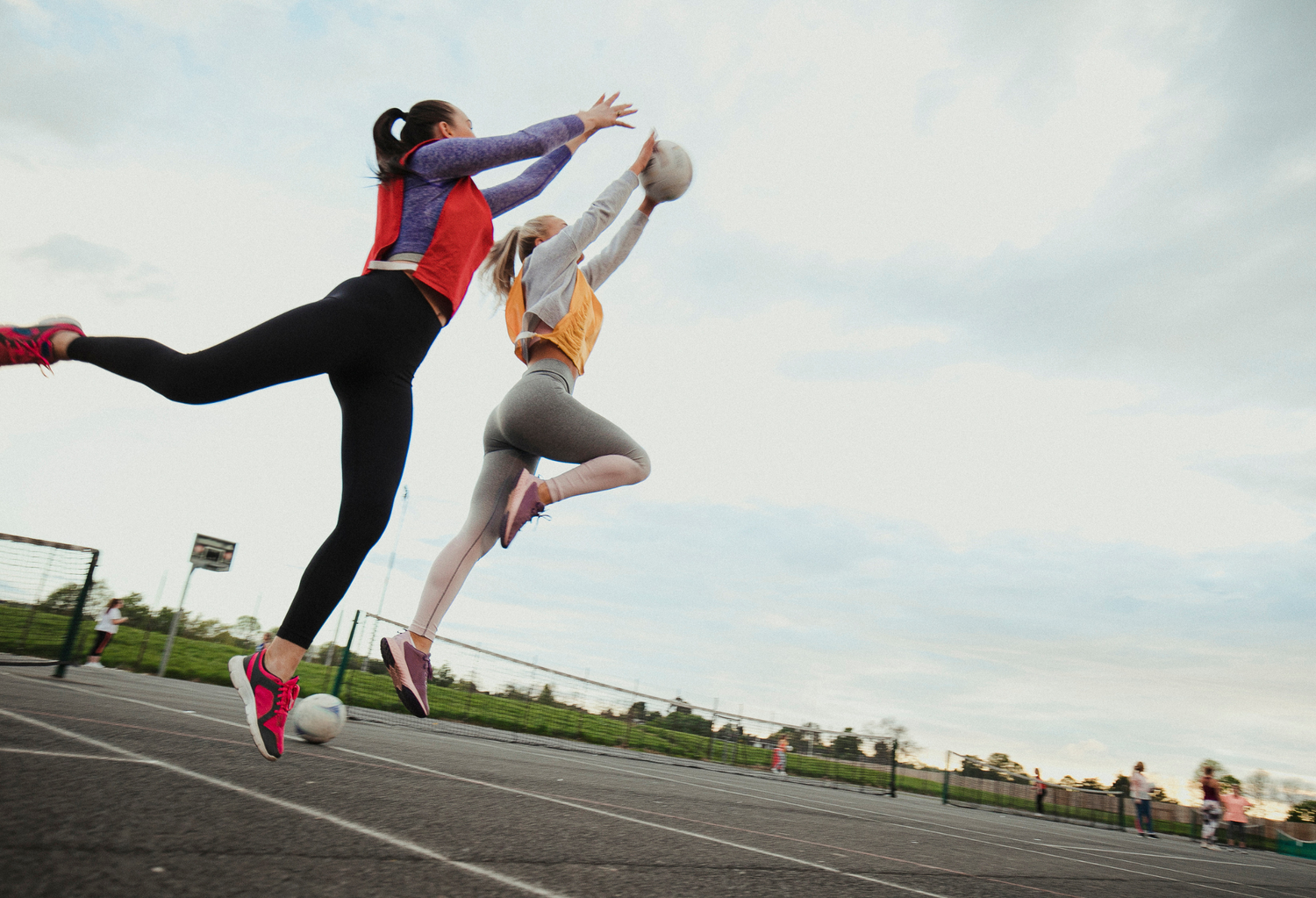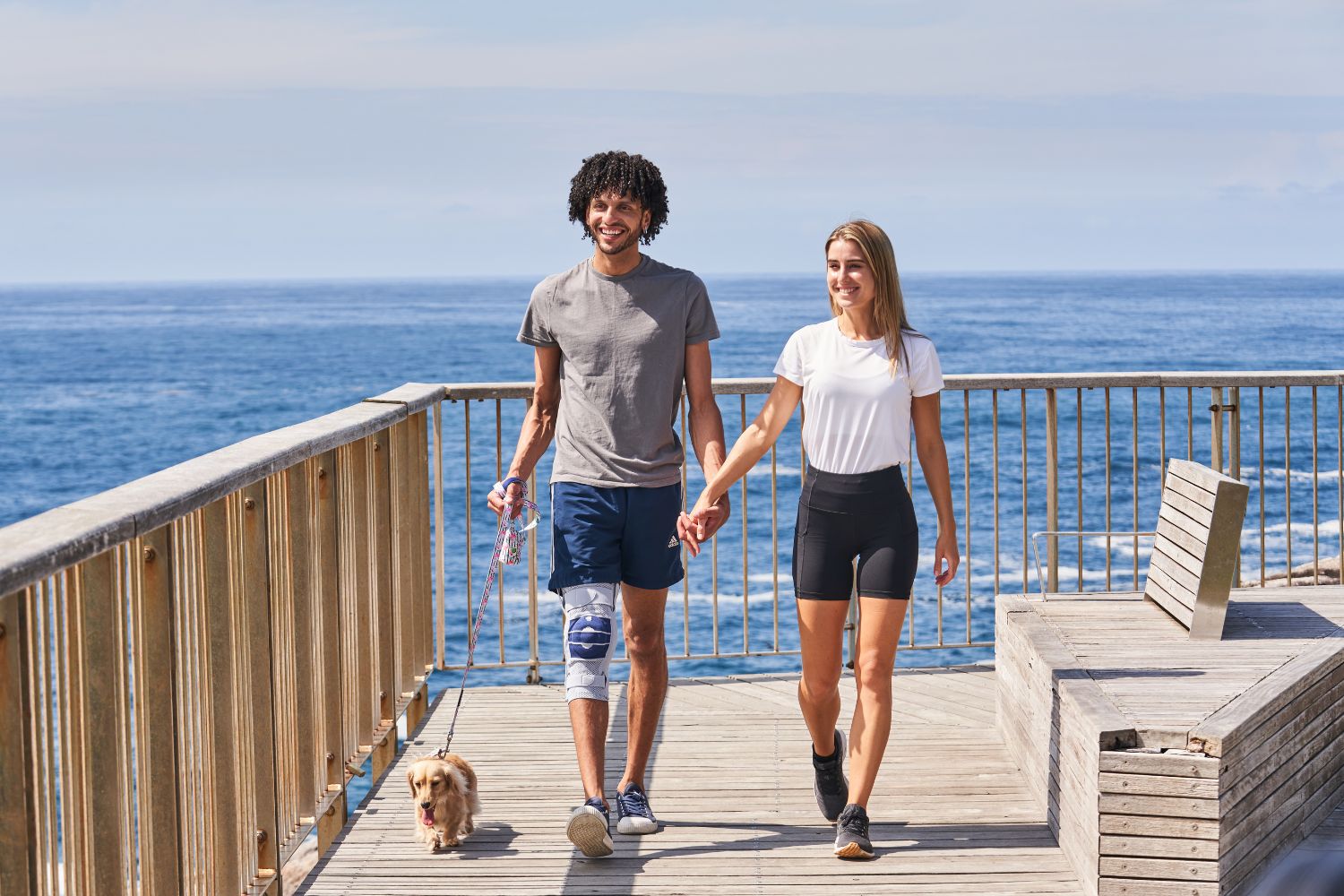Netball may be a no-contact sport, but that doesn’t mean injuries aren’t common. In fact, according to the Australian Sports Commission, you’re at risk of getting 14 Injuries for every 1000 hours you play. And while it’s true that they’re less likely to be severe, they can still throw you off your game (or take you off the court entirely). So, to keep you performing at your best, here are 5 common leg injuries in netball and how to avoid them.
Ankle sprain
What is it
An ankle sprain is an injury to one of the 11 ligaments in the ankle. These ligaments are made of tough fibrous tissue and are responsible for stopping the joint from moving too far in any direction. In netball, you run the risk of injuring them through fast start-stop motions, an awkward landing during a jump, and sharp twists when you pivot. With a sprain, you’ll generally experience swelling, pain, redness, and even some instability.
How to avoid it

No matter how hard you try, you won’t be completely immune to ankle sprains. Even stepping wrong on the sidewalk can cause this injury. But, there are some steps you can take to decrease your risk. These include:
- Strengthening exercises. Exercises like single-leg balance and calf raises will strengthen the joint’s support muscles, taking some of the pressure away from your ligaments.
- Stretching exercises. You can also try ankle rotations and plantar and dorsiflexion stretches to maintain the joint’s mobility. The less tense your muscles are, the less they’ll pull on the joint’s other tissues, and the better support they’ll be.
- Support. Make sure your sneakers aren’t past their expiry date so they’re still providing enough support for your feet and ankles.
- You can also give your ankles additional support through an ankle compression sleeve. Our Sports Ankle Support, for example, features compression knit and a figure 8 strap. The knit works by warming up and activating key muscle groups, helping them better support the joint (what we call ‘internal’ support). The strap, meanwhile, provides external support, protecting your ankle from sprains.
Shin splints
What is it
Shin splints are a repetitive strain injury. When you run, jump, or do any other activity where your shins need to absorb the force of your foot hitting the ground, the soft tissues around your shins start developing microtrauma. And when these microtraumas start stacking up from repetitive stress and insufficient recovery time, you’ll start feeling pain along your shin, often radiating between the ankle and the bottom of the knee.
How to avoid it
- Rest. The first step to avoiding repetitive stress injuries is to let your body heal. Ideally, you should be taking a rest day between every 3-5 training days.
- Increase your training time gradually. When it comes to doing physical activity, your body needs time to adjust. Going too hard too fast is a surefire way to end up with repetitive strain and stress injuries.
- Strengthen the calves. Your calves are responsible for supporting your lower leg bones and play a role in supporting the ankle and knee joints. The stronger the calf muscles, the better the support, and the less chance of microtrauma.
- Get appropriate footwear. Good cushioning around the soles means less impact stress on your shins.
- Get some sports compression socks or calf sleeves. These will reduce muscle oscillation (the vibrations shooting up your leg when your feet hit the ground), reducing micro trauma to the muscle. Keep in mind, though, that whatever compression support you wear needs to be of medical-grade stock and fit you perfectly. Otherwise, it won’t be effective.

Performance Socks
Achilles Tendonitis
What is it
Achilles tendonitis is a repetitive strain injury to the Achilles tendon, which connects the calf to the back of your heel. As netball requires a lot of running, jumping, and fast start-stop motions, the game can put a lot of stress on this tendon. And as a result, it develops micro tears and inflames, causing redness, swelling, and pain.
How to avoid it
Similarly to shin splints, you can reduce your risk of developing Achilles tendonitis through:
- Rest (especially if you feel discomfort along the back of your leg).
- Building up your training routine gradually
- Getting some compression socks. Our Performance Socks have multiple support zones around the foot, including a special Achilles Comfort Zone to reduce irritation.
- Stretching the calf muscles. Tight calves can pull on and agitate the tendon when you’re moving.
- Warming-up. Warming up warms up the leg muscles, making them more relaxed and flexible and kick-starting nutrient and oxygen delivery. Run some drills with your teammates, do some stretches, or just take a couple of laps around the court.
- Strengthening the foot and calf muscles. You can do this through calf raises, walking on sand, and taking a few minutes a day to alternate between tip-toeing around and walking on your heels.

Patellar Tendonitis (AKA Jumper’s Knee)
What is it
Jumper’s Knee is like Achilles tendonitis, except it affects the patellar tendon, which connects the patella (knee cap) to the shin bone. This tendon is responsible for stabilising the knee cap and helps you straighten your leg. But, too much running and jumping (especially when combined with weak leg muscles and bad shoes) can overstrain this tendon, making it inflamed. You’ll generally get some pain under your kneecap, redness, and even some swelling.
How to avoid it
- As usual, rest.
- Warm-up.
- Get a pair of knee compression sleeves. These will stipulate key muscle groups around the knee, helping your muscles better support the patella tendon and the knee joint at large. You can learn more about their benefits here.
- Good shoes. Support issues in the feet will affect the knees. If your shoes are worn out or aren’t the right fit for the sport, your ankle and knee tendons will be forced to compensate, increasing the strain on them.
- Stretch your quads and hammies. As tight calf muscles yank on the Achilles tendon, tight quadriceps and hamstrings agitate the patellar tendon.
- Work on strengthening the legs. Wall Squats, KettleBell Squats, Glute Bridges, and Calf Raises are all excellent additions to your netball training routine.
Pulled hamstring
What is it
Your hamstrings are the long muscles at the backs of your legs, running from your knees to your glutes. As they’re responsible for your ability to extend the hip and bend the knee, they play a big role in helping you move and manoeuvre. But while the hamstrings are sturdy, you can overstretch them when sprinting up and down the court or making sharp changes in direction.
How to avoid it
- Keep your leg muscles strong.
- Incorporate some hamstring, glute, and calf stretches into your routine. Yoga poses like Legs up the Wall and Downward Facing Dog are safe bets. Just don’t arch your back when you do them, or you’ll end up pulling your hamstring.
- Warm-up.
- Try a thigh compression sleeve to give the hamstrings a blood flow boost and some extra support.
To sum up
Leg injuries in netball may not usually be debilitating, but they can still be irritating. Tendonitis, sprains, pulled muscles, and shin splints are liable to make you lose focus and put you off your game. So if you play often or are just getting started, you should protect your legs through strengthening, stretching, and wearing the right gear.
See our Performance Compression range: Sports Compression Sleeves
















